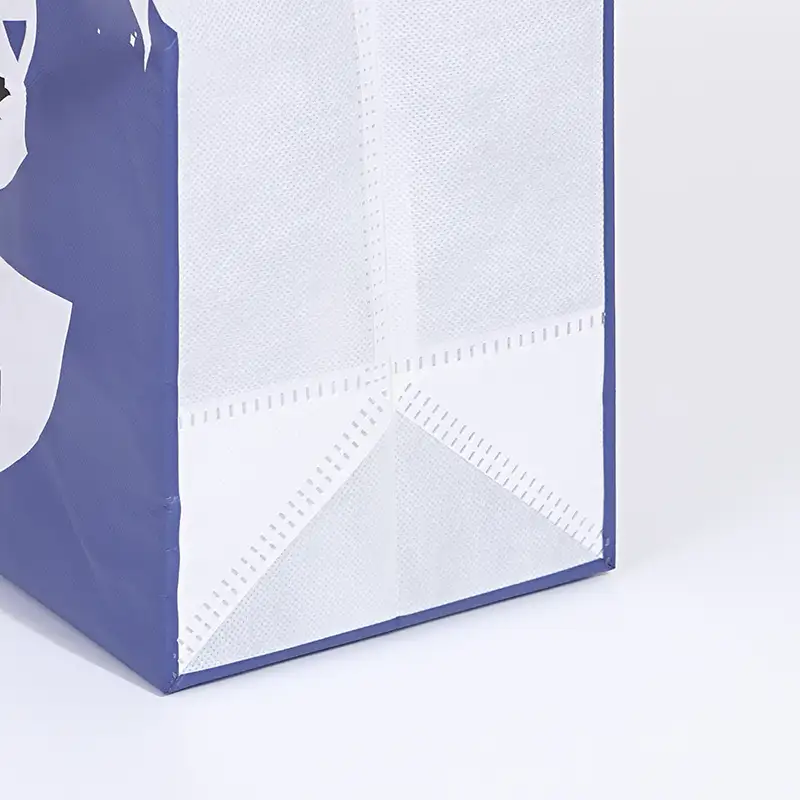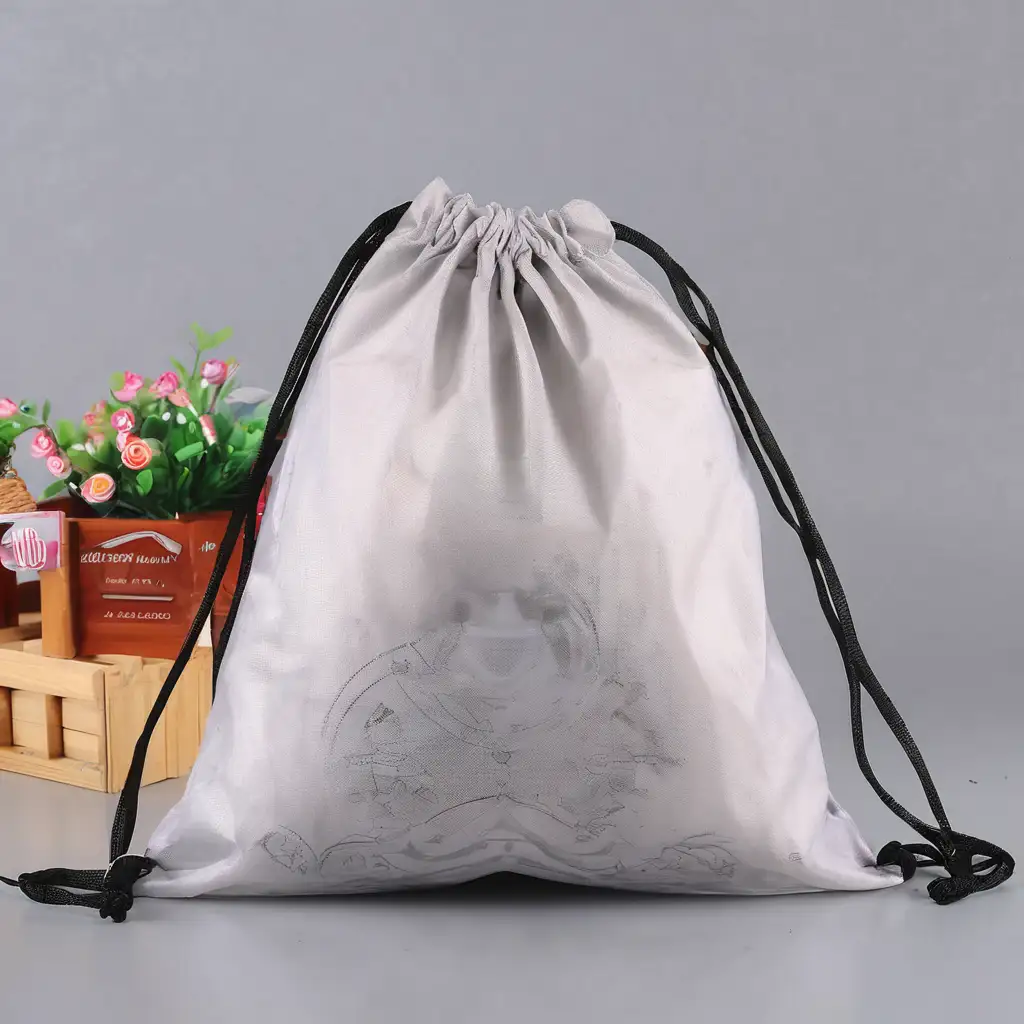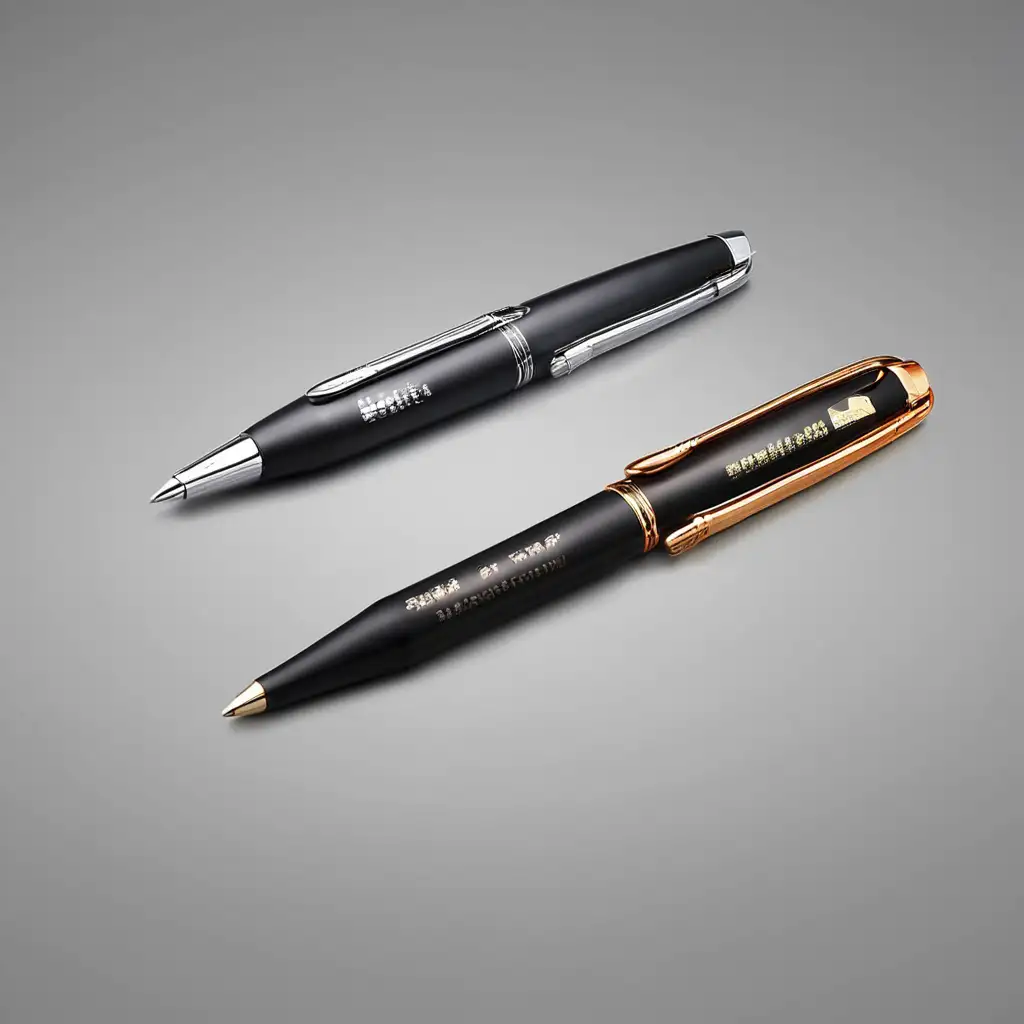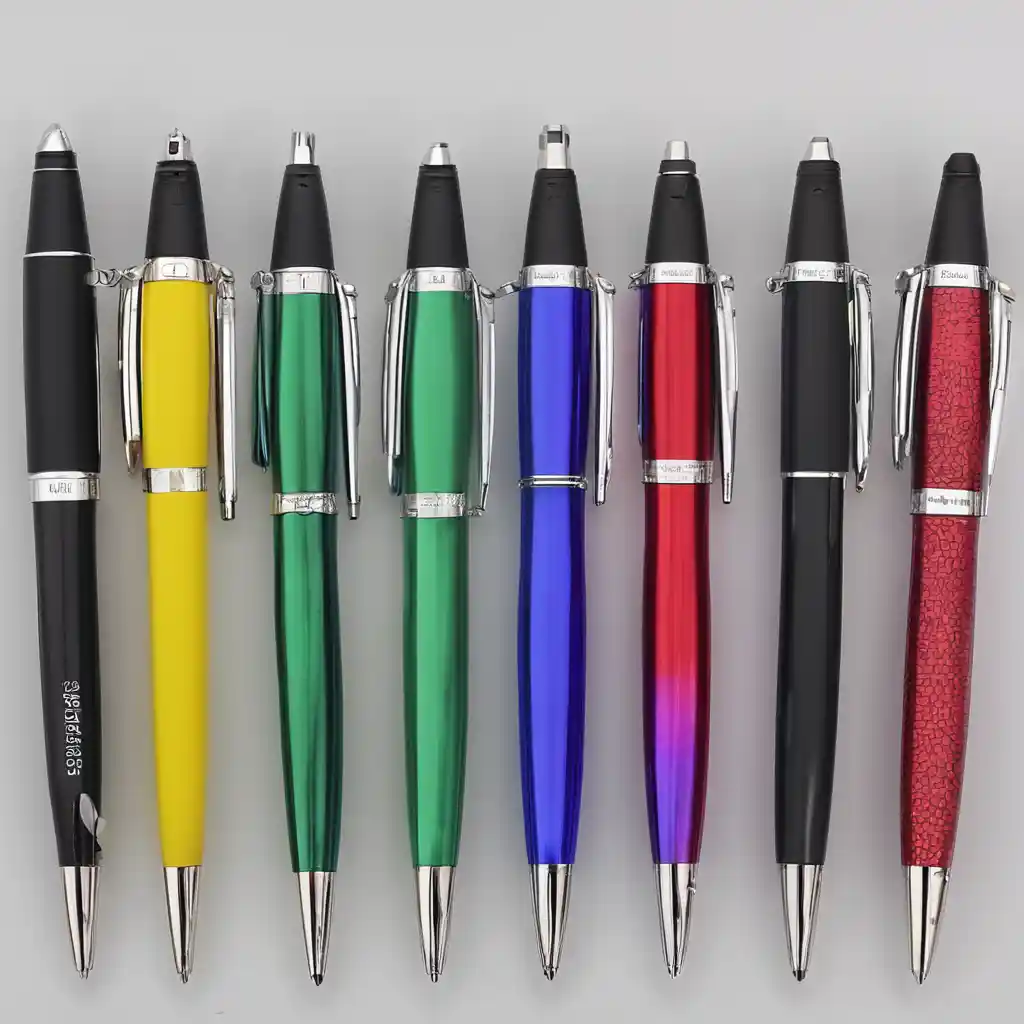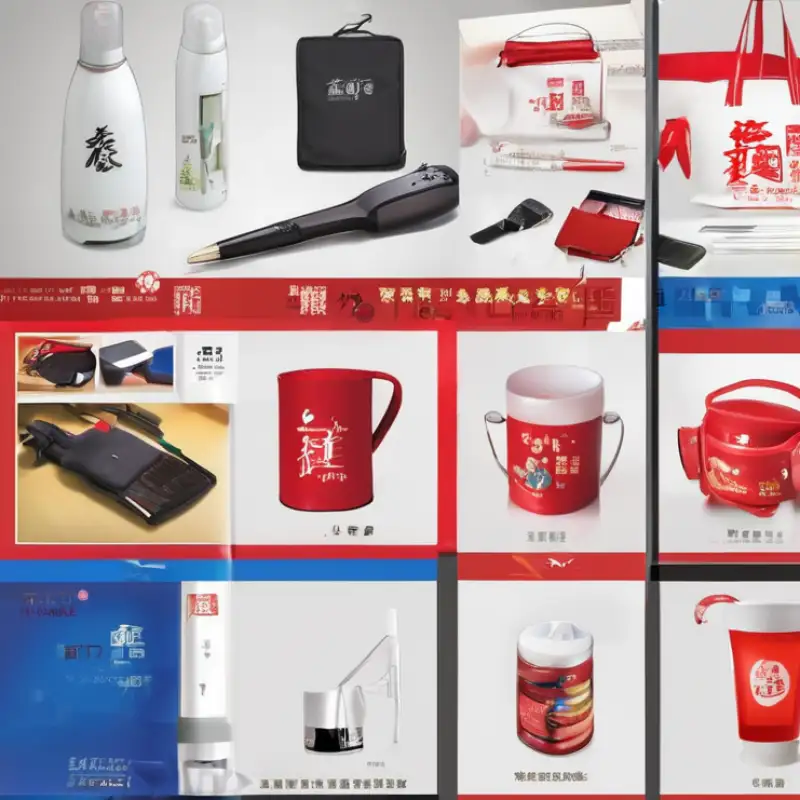The Rise of Eco-Friendly 3D Non-Woven Bags
As consumer awareness about environmental issues grows, the demand for sustainable alternatives in fashion has surged. 3D non-woven bags, traditionally known for their dimensional designs, have undergone a transformative journey. The integration of eco-friendly materials turns these bags into not just stylish accessories but conscientious choices aligned with the principles of sustainability.
In an era marked by heightened environmental consciousness, the surge in demand for sustainable fashion alternatives has paved the way for the reimagining of 3D non-woven bags. Traditionally celebrated for their dimensional designs, these bags are undergoing a transformative journey, embracing eco-friendly materials and evolving into more than just stylish accessories. This exploration delves into the details of this significant shift, where consumer choices align with the principles of sustainability.
The driving force behind the evolution of 3D non-woven bags lies in the expanding awareness among consumers regarding environmental issues. As individuals become more conscious of the impact of their choices on the planet, there is a growing demand for fashion items that reflect these values. This shift is reshaping the landscape of the fashion industry, urging brands to explore eco-friendly alternatives.
3D non-woven bags, traditionally admired for their dimensional aesthetics, are now becoming powerful statements of sustainability. The integration of eco-friendly materials transforms these bags from mere accessories into conscientious choices. Brands are recognizing the need to redefine the purpose of fashion items, not just as adornments but as expressions of ethical and environmental responsibility.
The integration of sustainable materials marks a new chapter in the design philosophy of 3D non-woven bags. Brands are increasingly opting for materials that are recycled, biodegradable, or sourced through eco-conscious processes. This deliberate choice not only aligns with the global movement towards sustainability but also sets a standard for responsible fashion practices.
The transformation of 3D non-woven bags is indicative of a broader shift in consumer behavior. Individuals are moving beyond a focus solely on style; they are making conscientious choices in their fashion purchases. The bags, adorned with eco-friendly features, become a medium through which consumers express their commitment to a greener and more sustainable lifestyle.
Sustainability is no longer an afterthought but a foundational principle woven into the fabric of fashion. 3D non-woven bags, with their sustainable materials, exemplify this integration. The bags become symbols of a mindful approach to fashion, emphasizing that aesthetics and ethics can coexist harmoniously.
The article delves into specific eco-friendly practices adopted by brands in the production of 3D non-woven bags. From sourcing recycled materials to utilizing energy-efficient manufacturing processes, brands are taking comprehensive steps to minimize their environmental footprint. These practices showcase a commitment to sustainability from inception to the final product.
While the rise of eco-friendly 3D non-woven bags is commendable, the article explores the challenges faced by brands in adopting sustainable practices. It also sheds light on the opportunities for innovation and collaboration within the fashion industry to address these challenges collectively. Balancing aesthetics, functionality, and sustainability remains a delicate but vital pursuit.
"The Rise of Eco-Friendly 3D Non-Woven Bags" concludes by highlighting the transformative journey these bags are undertaking. As more consumers embrace eco-friendly alternatives, the fashion industry is witnessing a paradigm shift. 3D non-woven bags, once admired for their dimensional designs, are now celebrated as symbols of sustainability, marking a new chapter in the narrative of fashion that values both style and the planet.
Materials Redefined: A Greener Canvas
At the heart of this evolution is the choice of materials. Eco-friendly 3D non-woven bags utilize sustainable fabrics, often derived from recycled or biodegradable sources. This deliberate shift away from traditional, less environmentally friendly materials underscores a commitment to reducing the ecological footprint associated with fashion accessories.
In the ever-changing landscape of sustainable fashion, the choice of materials plays a pivotal role in reshaping the design and impact of products. The evolution of eco-friendly 3D non-woven bags is no exception, as brands increasingly shift towards sustainable fabrics derived from recycled or biodegradable sources. This exploration delves into the heart of this evolution, emphasizing the significance of materials in creating a greener canvas for these conscientious fashion accessories.
The transition to eco-friendly 3D non-woven bags begins with a conscious choice of materials. Sustainable fabrics take center stage, serving as the building blocks for these bags. Brands committed to reducing their environmental impact opt for materials that contribute to a circular fashion economy, often incorporating recycled fibers or those with a minimal ecological footprint.
Eco-friendly 3D non-woven bags frequently utilize materials sourced from two main categories: recycled and biodegradable sources.
Recycled Sources: Fabrics derived from recycled materials, such as recycled PET bottles or post-consumer waste, showcase a commitment to repurposing existing resources. This approach not only reduces the demand for virgin materials but also addresses the issue of plastic pollution.
Biodegradable Sources: Some brands opt for biodegradable materials, emphasizing a cradle-to-cradle approach. Materials like organic cotton, hemp, or biodegradable polymers contribute to the reduction of environmental impact during both production and disposal phases.
The deliberate shift away from traditional materials that are less environmentally friendly marks a significant commitment to sustainability. Materials like conventional plastics and synthetic fibers, known for their persistence in the environment and contribution to pollution, are replaced by alternatives that align with eco-conscious practices.
One of the primary motivations behind choosing sustainable materials is the aspiration to reduce the ecological footprint associated with fashion accessories. The production of traditional materials often involves resource-intensive processes and generates significant waste. Eco-friendly fabrics, on the other hand, contribute to a more sustainable industry by minimizing resource consumption and waste production.
The article explores the versatility and innovation in material choices for eco-friendly 3D non-woven bags. Brands are experimenting with a diverse range of sustainable fabrics, seeking those that not only align with environmental goals but also offer durability, versatility, and a pleasing aesthetic. This exploration highlights the dynamic landscape of materials that contribute to the greening of fashion.
As part of the sustainable fashion narrative, brands are also taking steps to educate consumers about the impact of materials. The article delves into how transparent communication about material choices fosters consumer awareness and empowers individuals to make informed and environmentally conscious purchasing decisions.
"Materials Redefined: A Greener Canvas for Eco-Friendly 3D Non-Woven Bags" concludes by emphasizing the pivotal role that materials play in crafting a sustainable future for fashion. The intentional choice of eco-friendly fabrics not only transforms the design of these bags but also contributes to a broader shift towards a more responsible and environmentally aware industry. As materials are redefined, the canvas becomes greener, symbolizing a commitment to both style and sustainability.
3D Design: A Dimensional Approach to Style
The three-dimensional design of these bags takes center stage, offering a departure from conventional flat designs. The incorporation of 3D elements adds a sculptural aspect to the bags, making them visually intriguing and setting them apart in the realm of sustainable fashion. It's a marriage of aesthetics and eco-consciousness, where style meets substance.
In the realm of sustainable fashion, the emergence of 3D non-woven bags signifies more than just a shift in materials; it's a design revolution. This exploration delves into the spotlight on three-dimensional design, where these bags take center stage, departing from conventional flat designs. The incorporation of 3D elements not only adds a sculptural aspect but also sets them apart in the dynamic landscape of sustainable fashion. It's a marriage of aesthetics and eco-consciousness, where style meets substance in every fold and contour.
The departure from conventional flat designs marks a design revolution in the world of non-woven bags. Traditional bags, often limited to two-dimensional shapes, are reimagined with a three-dimensional perspective. This shift allows for greater creativity and opens up a new realm of possibilities in terms of aesthetics and functionality.
At the heart of the 3D design is the incorporation of sculptural elements. These bags become more than mere carriers; they transform into visual art pieces. The interplay of folds, contours, and shapes adds a level of visual intrigue that captures attention and invites a closer examination. Each bag becomes a unique and expressive creation, contributing to a diverse and vibrant fashion landscape.
The integration of 3D elements sets these bags apart in the realm of sustainable fashion. While sustainability is often associated with materials, the design itself becomes a powerful statement. The bags not only align with eco-conscious principles but also challenge the conventional norms of what sustainable fashion looks like. The marriage of innovative design and environmental responsibility becomes a distinguishing feature.
The synergy between aesthetics and eco-consciousness is a defining characteristic of 3D non-woven bags. Each fold and contour is not just a visual element; it's a testament to the commitment to sustainable design. The bags become a harmonious blend of style and substance, proving that fashion can be both visually appealing and environmentally responsible.
The article explores how the shift to 3D design provides brands with creative freedom. Designers can experiment with shapes, textures, and structural elements, pushing the boundaries of what non-woven bags can be. This creative exploration not only results in visually striking products but also challenges preconceived notions about the limitations of sustainable fashion.
While the emphasis is on aesthetics, the 3D design also enhances the functionality of these bags. The sculptural elements often contribute to increased storage capacity, improved organization, and a more ergonomic design. The bags not only look good but also offer practical solutions to the needs of the modern, conscious consumer.
The dimensional approach to style goes beyond aesthetics; it evokes emotional connections. Consumers are drawn to products that tell a story, and 3D non-woven bags, with their unique designs, become narratives of creativity, sustainability, and individuality. The article explores how these bags become more than accessories; they become expressions of personal values and style.
"3D Design: A Dimensional Approach to Style" concludes by highlighting the transformative impact of three-dimensional design in redefining fashion. These bags, with their sculptural elements and innovative shapes, not only elevate style but also contribute to the ongoing narrative of sustainability. As fashion embraces new dimensions, the canvas becomes richer, offering a tapestry of creativity, functionality, and eco-consciousness that sets the stage for a more vibrant and sustainable future.
Functional Art: The Practical Side of 3D Non-Woven Bags
Beyond their artistic appeal, these bags retain their functionality. The 3D design is not merely ornamental; it enhances the practical aspects of the bags. From increased storage capacity to innovative compartmentalization, these eco-friendly accessories seamlessly blend form and function, proving that sustainability need not compromise usability.
The allure of 3D non-woven bags extends beyond their visual appeal, transcending traditional notions of accessories. This exploration delves into the concept of functional art, where the three-dimensional design of these bags is not merely ornamental but serves to enhance their practical aspects. From expanded storage capacity to innovative compartmentalization, these eco-friendly accessories seamlessly blend form and function, proving that sustainability and usability can coexist harmoniously.
The journey into functional art begins with an appreciation of the aesthetic appeal of 3D non-woven bags. The sculptural elements, folds, and contours are not arbitrary; they are intentional design choices that contribute to the overall visual appeal. The bags become more than mere carriers; they transform into statements of style and individuality.
Amidst the artistic expression, these bags steadfastly retain their core functionality. The 3D design is not a compromise on usability but rather a strategic enhancement. Traditional notions of flat, utilitarian bags are challenged as the three-dimensional elements are integrated to serve a purpose beyond aesthetics.
One of the practical advantages of 3D non-woven bags lies in their increased storage capacity. The dimensional design allows for a more efficient use of space. Users can enjoy a roomier interior without compromising the external dimensions of the bag. This expanded storage capacity addresses the practical needs of individuals who seek both style and functionality in their accessories.
The article explores how 3D design opens up opportunities for innovative compartmentalization. Traditional bags often rely on flat surfaces and basic pockets. In contrast, 3D non-woven bags can incorporate multi-dimensional compartments, hidden pockets, and intricate organizational features. This not only enhances the bags' usability but also caters to the modern consumer's desire for versatility and convenience.
Beyond aesthetics and storage, the ergonomic considerations of 3D non-woven bags are highlighted. The three-dimensional design allows for a more ergonomic fit, ensuring that the bags complement the natural contours of the body. This focus on user comfort adds an extra layer of functionality, making these bags practical companions for daily activities.
The synthesis of form and function becomes a central theme. 3D non-woven bags are presented as accessories that seamlessly blend the artistic with the utilitarian. The article emphasizes that sustainability is not sacrificed for usability; instead, the two aspects complement each other, creating a product that appeals to both the environmentally conscious and the pragmatically minded consumer.
The exploration extends into how these bags offer practical solutions for the demands of modern lifestyles. As individuals navigate their daily routines, the functionality of their accessories becomes crucial. 3D non-woven bags emerge as not just stylish statements but as practical solutions that cater to the diverse needs of a dynamic and fast-paced world.
"Functional Art: The Practical Side of 3D Non-Woven Bags" concludes by redefining the concept of practical elegance. These bags exemplify a harmonious blend of artistic expression and utilitarian functionality. In embracing the three-dimensional design, fashion transcends the ordinary, offering consumers a choice that aligns with their desire for both style and substance. As 3D non-woven bags become symbols of functional art, they stand as testaments to a new era in sustainable fashion where practicality and aesthetics converge.
Eco-Fashion Statements: Carrying Values with Every Bag
Choosing an eco-friendly 3D non-woven bag becomes a conscious fashion statement. Each bag becomes a tangible representation of the wearer's commitment to sustainable choices. The fusion of cutting-edge design and eco-friendly materials transforms these bags into symbols of a progressive, environmentally conscious lifestyle.
In the evolving landscape of fashion, the choice of accessories extends beyond mere trends; it becomes a reflection of personal values. This exploration delves into the concept of eco-fashion statements, where choosing an eco-friendly 3D non-woven bag goes beyond aesthetics. Each bag becomes a tangible representation of the wearer's commitment to sustainable choices, forging a fusion of cutting-edge design and eco-friendly materials that transforms these accessories into symbols of a progressive, environmentally conscious lifestyle.
The article opens by emphasizing that fashion, in the realm of eco-friendly 3D non-woven bags, transcends fleeting trends. Choosing such a bag becomes a personal declaration, a conscious decision to align one's style with values that extend beyond the immediate allure of fashion trends.
The central theme revolves around the tangible representation of commitment. Each eco-friendly 3D non-woven bag becomes a visual and tactile manifestation of the wearer's commitment to sustainable choices. The bag serves as a daily reminder of the individual's role in contributing to a greener and more environmentally conscious world.
The exploration delves into the fusion of cutting-edge design with eco-friendly materials. 3D non-woven bags are not merely functional items; they are curated expressions of style that push the boundaries of conventional design. The article emphasizes how the bags stand at the intersection of innovation and sustainability, becoming ambassadors of a fashion-forward ethos.
The eco-friendly materials used in these bags become symbolic representations of values. Whether recycled, biodegradable, or sustainably sourced, the materials contribute to the narrative of responsible consumption. The article explores how consumers, through their choice of accessories, communicate a commitment to ethical and environmentally conscious practices.
The eco-fashion statements extend into the realm of lifestyle. 3D non-woven bags become symbols of a progressive lifestyle, where individuals prioritize not only personal style but also environmental responsibility. The bags signal an alignment with a broader movement towards sustainable living and conscious consumerism.
The article discusses how choosing an eco-friendly 3D non-woven bag becomes a form of everyday activism. In a world where individuals seek meaningful ways to contribute to environmental causes, fashion becomes a platform for subtle yet impactful activism. The bags, adorned with eco-conscious features, represent a small but significant step towards a more sustainable future.
Wearing an eco-friendly 3D non-woven bag becomes a conversation starter. The distinctive design and eco-friendly elements prompt inquiries and discussions about sustainability. The article explores how these accessories become not just personal style statements but avenues for raising awareness and fostering dialogue on environmental issues.
"Eco-Fashion Statements: Carrying Values with Every Bag" concludes by emphasizing that the choice of an eco-friendly 3D non-woven bag goes beyond fashion preferences. It becomes a conscious decision to carry values with every accessory. In a world where fashion is increasingly intertwined with ethical considerations, these bags stand as symbols of a transformative approach to personal style—one that embraces innovation, sustainability, and a commitment to a better world with every fashion statement made.
Sustainable Sourcing and Production
The commitment to eco-friendliness extends beyond the finished product. Brands producing 3D non-woven bags with sustainability in mind often prioritize responsible sourcing and ethical production practices. This holistic approach ensures that every step of the manufacturing process aligns with the values of environmental responsibility.
The journey towards eco-friendliness in the realm of 3D non-woven bags goes beyond the finished product; it extends to the very roots of sourcing and production. This exploration delves into how brands, committed to sustainability, prioritize responsible sourcing and ethical production practices in crafting these innovative accessories. The holistic approach ensures that every step of the manufacturing process aligns with the values of environmental responsibility, creating a product that not only looks good but also embodies a commitment to a greener, more ethical future.
Brands that produce 3D non-woven bags with eco-friendliness in mind prioritize materials that are either recycled, biodegradable, or sustainably sourced. This foundational commitment sets the tone for an environmentally conscious manufacturing process.
The exploration delves into responsible sourcing practices adopted by these brands. Whether it's using recycled fibers, materials derived from renewable resources, or partnering with suppliers committed to ethical practices, brands ensure that the raw materials are sourced in a manner that minimizes environmental impact and promotes social responsibility.
The manufacturing process is examined through the lens of minimizing environmental footprint. Brands adopting sustainable practices often implement energy-efficient manufacturing processes, water conservation measures, and waste reduction strategies. The article explores how these initiatives contribute to a more eco-friendly production cycle.
The commitment to sustainability extends to the treatment of the workforce involved in the production process. Brands that prioritize ethical production practices ensure fair wages, safe working conditions, and adherence to labor rights. The article discusses how this ethical approach contributes to a more holistic and responsible supply chain.
The exploration highlights the importance of collaboration with like-minded partners. Brands producing 3D non-woven bags often seek partnerships with suppliers, manufacturers, and other stakeholders who share their commitment to sustainability. This collaborative approach ensures that the entire production ecosystem aligns with the overarching goal of environmental responsibility.
Transparency in the supply chain is a key aspect of sustainable sourcing and production. Brands strive to communicate openly about their sourcing practices, the origins of materials, and the production journey. This transparency not only builds trust with consumers but also encourages accountability throughout the supply chain.
To validate their commitment to sustainability, brands often seek certification from recognized eco-friendly standards.
By transparently sharing information about their eco-friendly practices, brands empower consumers to make ethical choices and contribute to a more sustainable future through their purchasing decisions.
"Sustainable Sourcing and Production: Crafting Eco-Friendly 3D Non-Woven Bags" concludes by highlighting the holistic nature of the green innovation process. From responsible material sourcing to ethical production practices, brands that embrace sustainability in every aspect of their operations pave the way for a more environmentally conscious fashion industry. The article emphasizes how the commitment to eco-friendliness is not just a feature of the end product but a fundamental ethos that shapes the entire journey of creating 3D non-woven bags.
Consumer Awareness and Conscious Choices
The adoption of eco-friendly 3D non-woven bags also reflects a shift in consumer awareness. Individuals are increasingly making conscious choices, valuing products that not only meet their aesthetic preferences but also align with their ethical and environmental beliefs. The bags become a bridge between style and responsible consumerism.
The emergence of eco-friendly 3D non-woven bags represents more than just a shift in product choices; it reflects a broader transformation in consumer awareness. This exploration delves into how individuals are making conscious choices, valuing products that not only cater to their aesthetic preferences but also align with their ethical and environmental beliefs. These bags become a bridge between style and responsible consumerism, embodying a new era where the impact of purchasing decisions extends beyond personal taste.
The article begins by discussing the rise of conscious consumerism. Modern consumers are increasingly aware of the environmental and ethical implications of their choices. This awareness extends to the products they buy, with an emphasis on seeking items that contribute positively to the planet and society.
Eco-friendly 3D non-woven bags become a manifestation of aesthetic preferences with a conscience. The exploration delves into how consumers are drawn to the bags not only for their innovative design but also for the values embedded in their eco-friendly materials and sustainable production processes.
The central theme revolves around the alignment of personal values with purchasing decisions. Individuals, when choosing eco-friendly 3D non-woven bags, express their commitment to sustainability. The article explores how these bags serve as symbols of a conscious choice to support environmentally responsible products.
The bags are presented as a bridge between style and responsibility. No longer seen as mutually exclusive, style and ethical considerations converge in the realm of eco-friendly 3D non-woven bags. Consumers seek products that enhance their personal style while contributing to a larger ethos of responsible consumption.
The exploration emphasizes the role of education in shaping consumer choices. As individuals become more informed about environmental issues, they actively seek products that reflect their values. Eco-friendly 3D non-woven bags, with their transparent sourcing and production practices, become choices driven by a desire for knowledge and responsible decision-making.
Social and environmental values play a crucial role in consumer decision-making. The article discusses how the adoption of eco-friendly 3D non-woven bags is part of a larger movement where consumers consider the broader impact of their purchases on both society and the planet. The bags become conduits for expressing these values.
The influence of brand messaging on consumer choices is explored. Brands that effectively communicate their commitment to sustainability and ethical practices resonate with conscious consumers. The article discusses how clear and transparent brand messaging contributes to building trust and loyalty among individuals seeking eco-friendly options.
"Consumer Awareness and Conscious Choices: The Evolution of Eco-Friendly 3D Non-Woven Bags" concludes by highlighting the evolution of consumer empowerment. The choices individuals make in favor of eco-friendly options shape not only their personal style but also contribute to a collective movement towards a more conscious and sustainable world. The bags, in this context, emerge as symbols of a transformative era where consumers wield their purchasing power to drive positive change.
Challenges and Innovations in the Eco-Friendly Fashion Landscape
While the move towards eco-friendly fashion is commendable, challenges persist. The article explores ongoing innovations in materials, manufacturing processes, and consumer education that contribute to overcoming these challenges. It delves into the collaborative efforts of the fashion industry, consumers, and environmental advocates in shaping a more sustainable future.
The commendable shift towards eco-friendly fashion is not without its hurdles. This exploration delves into the persistent challenges faced by the industry and highlights ongoing innovations in materials, manufacturing processes, and consumer education that contribute to overcoming these obstacles. The article intricately examines the collaborative efforts of the fashion industry, consumers, and environmental advocates in shaping a more sustainable future.
The article begins by acknowledging the commendable efforts but underscores the uphill battle faced by the eco-friendly fashion movement. Despite progress, challenges such as mass adoption, scalability, and cost-effectiveness persist, setting the stage for a comprehensive exploration.
The exploration delves into the realm of materials, discussing ongoing innovations in sustainable fabrics and alternatives. From plant-based fibers to recycled materials, the article highlights how the fashion industry is continually pushing boundaries to discover and implement materials that are not only eco-friendly but also meet the demands of style and comfort.
A critical aspect of the eco-friendly fashion landscape is the transformation of manufacturing processes. The article discusses innovations that prioritize energy efficiency, waste reduction, and environmentally conscious practices. From water-saving techniques to the use of renewable energy, these advancements aim to minimize the environmental impact of fashion production.
Consumer education plays a pivotal role in overcoming challenges. The article explores initiatives aimed at educating consumers about the environmental and ethical implications of fashion choices. By fostering awareness, consumers become active participants in the shift towards sustainability, making informed decisions that align with their values.
Technology emerges as a powerful ally in the quest for sustainable fashion. The exploration delves into how advancements such as blockchain technology and artificial intelligence are being leveraged to enhance transparency in the fashion supply chain. These technological innovations contribute to building trust and accountability.
The concept of circular fashion takes center stage. The article discusses how a shift from traditional linear models of production and consumption to circular models promotes recycling, reusing, and reducing waste. Circular fashion initiatives contribute to the creation of a more regenerative and sustainable fashion industry.
The collaborative nature of the fashion industry's response to sustainability challenges is highlighted. Partnerships between brands, environmental organizations, and consumers are explored, emphasizing the collective responsibility in driving lasting change. The article underscores the need for a united front in addressing the multifaceted challenges.
Acknowledging economic challenges, the exploration discusses innovations that strive to make eco-friendly fashion more accessible. From cost-effective sustainable materials to business models that prioritize affordability, these innovations aim to overcome economic barriers and make sustainable choices inclusive.
"Challenges and Innovations in the Eco-Friendly Fashion Landscape" concludes by emphasizing that the journey towards sustainable fashion is a dynamic and collaborative process. While challenges persist, ongoing innovations and collective efforts are paving the way for a more sustainable future. The article encourages a continued commitment from all stakeholders to foster positive change in the fashion industry and beyond.
Conclusion: Paving the Way for Eco-Friendly Elegance
"3D Non-Woven Bags Go Eco-Friendly" concludes with a reflection on the transformative journey of these accessories. From their traditional roots in design to the contemporary fusion with sustainable materials, these bags represent a paradigm shift in the world of fashion. With each bag carried, individuals contribute to a narrative of style, functionality, and a shared commitment to sculpting a sustainable tomorrow.
